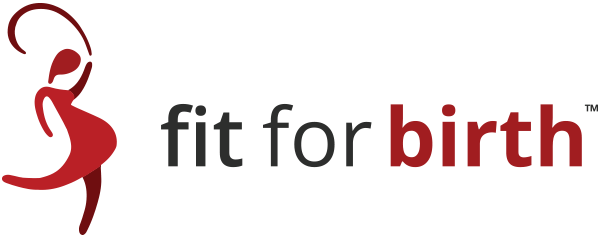Diastasis Recti
in the Year 2020

Physiotherapists are Frustrated
Moving away from a “fear-based approach” to Diastasis Recti (DR) – as one Fit For Birth student recently suggested to me – and truly help our clients overcome the physical and mental realities of it, requires accurate and up to date education. We are in the midst of 2020 and it’s time for an update as to where we are as pre & postnatal practitioners treating DR.
I recently received feedback from a former student who had graduated Fit For Birth’s Pre & Post Natal Diastasis and Core Consultant (PPDCC) Course: “I had more info than most WPT’s that my moms were using.” Compare this sentiment to a scientific research study (February 2020) that identified the current opinion of physiotherapists and midwives regarding the management of DR for postpartum women in their healthcare settings (in Sweden).
Sweden is a country known for being progressive in their birth-related medical practices[1], and yet the results “…identified an overarching theme: Ambivalence towards the phenomenon increased IRD and frustration over insufficient professional knowledge.”[2] [IRD = Inter Recti Distance / the presence of DR.]
If physical therapy professionals in Sweden are frustrated about their lack of knowledge, what does that say about the professionals in the rest of the world? And where does that leave our clients?
Which Diastasis-Closing Exercises should Practitioners Choose?
Research from the scientific journal Physical Therapy (April 2020) wanted to find “a consensus on which abdominal or pelvic floor muscle (PFM) exercises to recommend”[3] for DR. Their findings were similar to a least one previous study, saying that crunches (“head lift and twisted curl-up exercises”) decreased the diastasis separation both above and below the navel, comparing to the “in-drawing” and “PFM contraction” which “leads to an acute increase in IRD…in postpartum women.”[4]
Although authors suggest that more research should be done to determine if the effect is actually permanent, the conclusion is clearly opposite of that age old philosophy that “postpartum women with DR should not do crunches.”
But should it be? Should we be teaching crunches to our postpartum clients with abdominal separation?
Just because an exercise closes DR doesn’t mean that it is the best use of the precious minutes of your exercise class. First of all, as the researchers suggested, is this effect lasting, or is it just for the moment of doing? Additional research will tell us, but at least we know we can no longer blame crunches for abdominal separation. Secondly, crunches may not be the most functional exercise. Whenever do you want to teach your clients to create rounded shoulders and forward head posture? It would be wiser for holistic-minded researchers to study exercises like the full sit-up, which is a movement that any person getting out of bed has to perform, particularly a postpartum mom who may be playing with her infant or toddler.
One thing that can’t be overlooked, however, is that the TVA draw-in can cause DR separation. In the PPDCC, we discuss how “over-activation” of the core – as more often happens with fitness enthusiasts and certain kinds of instructors – does indeed cause DR. This study is the proof.
And what does this mean for planks, which is another “no-no” exercise for anyone with DR? At Fit For Birth, we teach that it’s HOW you do it that matters far more than WHAT exercise/position you have your client do. This is why we teach the Core Breathing Belly Pump™ as a critical foundation for practically every client.CS

What Does it Mean When My Client’s Belly Button is Popping Out?
Many of us have had clients who complain of their belly buttons popping out. It can be frustrating for your program design. These kinds of umbilical hernias so commonly go hand in hand with DR, that although they are so often medically considered to be a distinctly different class of issue, the reality is that pre & postnatal fitness professionals find ourselves in these dialogues all the time.
Research in the journal Hernia (March 2020) compared mesh to sutures for hernia repair, basing its conclusions on rate of hernia recurrence, rather than, for example, proper muscle function. (“Undoubtedly, aside from obesity and overweight, the coexistence of diastasis recti is a risk factor for recurrence…”[5] of hernia.)
These researchers are comparing stitches and mesh, as to which one will hold longer. But how do these two surgeries affect the ability of a postpartum mom to breathe, for example? And what does this mean, then, for her access to parasympathetic pathways, her mental-emotional status, internal chemistry, core function, and more? Typically, these surgeries do cause a diminishment of things like back pain – of course they do – because they are creating an artificial brace for the individual. But how many of you practitioners have already spent years teaching clients to NOT use weight belts because it creates an artificial brace?! Does it make sense to use a brace instead of teaching the musculature how to do its natural job?
When will our medical and research practices catch up to more holistic and foundational solutions? Right now, the focus is still so often on the superficial, ones that can be bought and sold and covered by insurance.

To be sure, we need these surgical solutions for those who are in deep need with the biggest injuries. But so many of our clients just need to be instructed on solid inner unit function. This surgical approach to hernia is similar in example to the World Health Organization’s acknowledgment that the majority of modern countries are over-prescribing C-section. Yes, we know we need C-sections. It’s just that we also know that we need to use them more intelligently, which in the case of C-section means less often.
So, for anyone still wondering the conclusion to which hernia surgery seems more likely to hold, “For the smallest umbilical hernias, the use of dense fascia suturing (short-stitch technique) may be an effective alternative to patch repair techniques in patients with no additional risk factors for recurrence.”[6] Only one problem: “Diastasis recti is a factor favoring umbilical hernia recurrence after both pure tissue repair and patch repair.”[7] (Hand in face emoji.) In fact, “In the sutured repair group, recurrence occurred only in the group of patients with coexistent diastasis recti.”[8]
So if your client has DR in addition to her hernia, we better make sure that she gets coached on proper function somewhere along the way.
I often find myself saying this: “We have reached a point in human history where most modern humans need at least three months of corrective exercise coaching in order to avoid the expectation of pain-relieving medications and surgery down the road.” We need to teach this in our school system, but if pregnancy is the motivator for your client, so be it.
James Goodlatte
Founder of Fit For Birth
- 1 Sweden has managed to maintain low CS rates” https://bmcpregnancychildbirth.biomedcentral.com/articles/10.1186/s12884-018-2007-7#:~:text=Setting,much%20lower%20than%20European%20averages.
- 2 https://www.ncbi.nlm.nih.gov/pmc/articles/PMC7045604/
- 3 https://academic.oup.com/ptj/advance-article-abstract/doi/10.1093/ptj/pzaa070/5820961?redirectedFrom=fulltext
- 4 https://academic.oup.com/ptj/advance-article-abstract/doi/10.1093/ptj/pzaa070/5820961?redirectedFrom=fulltext
- 5 https://link.springer.com/article/10.1007/s10029-020-02170-1
- 6 https://link.springer.com/article/10.1007/s10029-020-02170-1
- 7 https://link.springer.com/article/10.1007/s10029-020-02170-1
- 8 https://link.springer.com/article/10.1007/s10029-020-02170-1
